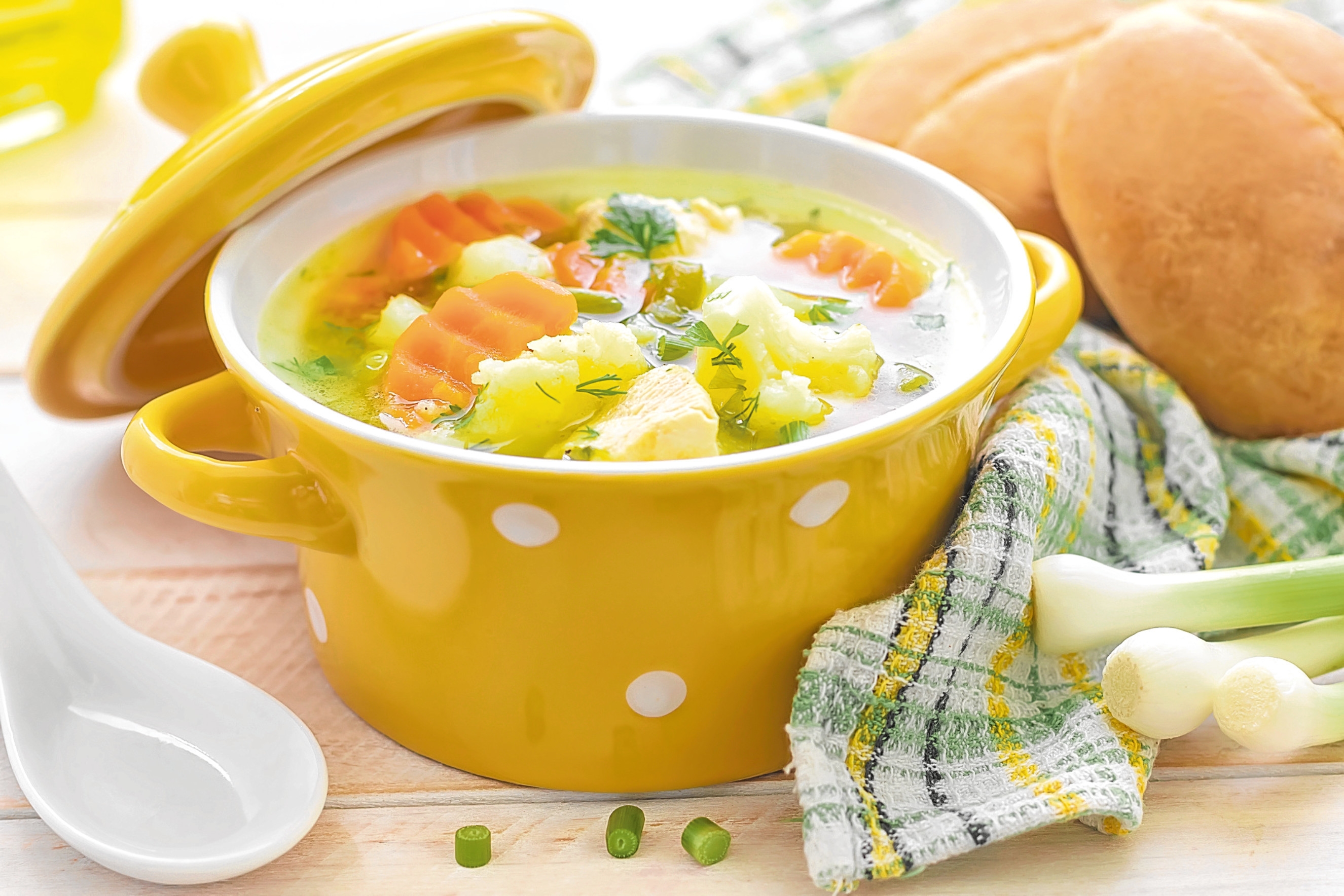
SUE Lawrence is an acclaimed cookery writer and novelist.
Her latest book The Scottish Soup Bible is published this month.
She told Tracey Bryce the Honest Truth about Scotland’s favourite staple…
What is soup?
At its best, local produce – fish, shellfish, fish bones, mutton, lamb or beef bones, barley, root veg, seaweed, nettles and kale – is thrown into the pot with water and cooked to nourishing perfection. It is something we have always done well in Scotland, since the first pot was hung over a peat fire.
Where does the word “soup” come from?
It’s as old as modern historians can trace, coming from Latin perhaps but no one really knows. Some references suggest that Scots’ soup-making skills can be attributed to the French influence of the Auld Alliance.
Certain soups and pottage seem to be directly linked to this, but long before the claret trade began and long before Mary Queen of Scots sailed from France to take her throne in Scotland, we were ladling out tasty soups.
What was the first soup?
The best-known recipes such as Scotch broth, Cock-a-leekie, Partan bree, Reestit Mutton and Cullen skink have been in circulation for centuries.
They were initially handed down through households before later being recorded in books. The earliest cookbooks all contain recipes for soup.
What are the most popular types?
Soups now often feature ingredients from around the world but in Scotland, traditional flavours – often with modern twists – are still the most popular.
Favourites include: mushroom soup, traditionally made in autumn when wild mushrooms are widely available to foragers; lentil soup, a versatile, tasty classic with or without bacon; the modern version of Cullen skink with smoked haddock fillets rather than the traditional Finnan haddie; and tattie and leek, a simple soup that benefits from the best quality of ingredients.
And some of the more bizarre?
Making winkle soup is not for the faint-hearted. If you try not to think of them as sea snails it might make it easier. It is thickened using oatmeal.
Would you say we eat soup? Or drink it?
Many of our magnificent, robust soups are meals in their own right and are served in large bowls with bread, bannocks or oatcakes on the side.
Some are served in shallow soup plates as a starter before the main course. Both of these are ‘eaten’ with a spoon due to the consistency and ingredients. Even if I ‘drink’ soup from a mug after a long walk on a cold winter’s afternoon I always need a spoon to hand to scoop up the best bits.
Are all soups served hot?
Most Scottish recipes are. There are some interesting cold soups which folk from warmer climes are inclined towards but we Scots still seem to prefer the warmth of a hot bowl on a cold day.
Why do Scottish kitchens seem to have a never-ending supply of soup, always on the go?
When I was a child, the soup pot sat on the stove in every season. If unexpected visitors arrived, more stock or whatever we had to hand would be added to the pot.
And that’s the wonderful thing about soup: it can be eked out with even more nourishing ingredients to feed more mouths if necessary.
Soup is said to give you energy … is that true?
They certainly are packed with wholesome, nutritious ingredients … so yes, I would say that this would be true.
Why does soup always make you feel better when you’re ill?
When we are unwell or just a little under the weather, our bodies crave soup.
Hearty vegetable, wholesome lentil or perhaps a light chicken broth – all slip down easily while nourishing the body and soothing the soul.

Enjoy the convenience of having The Sunday Post delivered as a digital ePaper straight to your smartphone, tablet or computer.
Subscribe for only £5.49 a month and enjoy all the benefits of the printed paper as a digital replica.
Subscribe